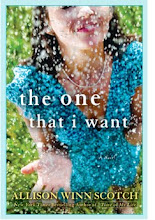Question of the day: I'm wondering how to structure chapters. I DID start from the beginning and kept writing and writing and it's like one long stream of consciousness, sort of like Stephen King's Delores Claiborne. How do you go about structuring that first chapter and the rest to follow?
This is a great question because I think this is very much a learned skill, at least it was for me.
This is a great question because I think this is very much a learned skill, at least it was for me.
I think it is very, very common for first-time writers (and I say that with no condescension, because, as I said, I dealt with this very situation) to have more stream of consciousness writing than is necessary. In fact, exposition - too much of it - is a big reason why early manuscript go awry. Again, I speak from experience. Good fiction writing really minimizes exposition: you don't tell readers what you're trying to convey; you put your characters in situations in which they're conveying it for you. By considering this every time you write a scene, your chapters and how they unfold start to happen naturally. Let me explain.
Another rule is that I try not to have a scene address a stand-alone conflict. What I mean by this is that, even if it's a very small thing, I try to throw in two issues into one scene. This really gives the plot a sense of momentum and keeps the smoking-fast pace because there's never a down moment. For example, I wrote a scene today in Happiest Days in which my character assesses how to cope with the fact that her husband might want to move out of their small town. In mulling over the repercussions with her best friend, I worked in a quick bite about her friend's own marriage - the friend (who is separated) makes a quick comment about something that happened the previous night with her estranged husband. I don't linger over it, there's no need to, but it reminds readers as to what's going on with that plot line, moves the plot line forward, AND is pertinent to my heroine's own situation. Do you see what I mean? Keep as many things in the mix as possible, and your plot will fly by.
Another rule is that I try not to delve into a more than a paragraph or two consecutive of my character's inner-thoughts. This isn't hard and fast rule because sometimes, it's necessary to convey what she's thinking, things that simply CAN'T be conveyed via action - like when she's mulling over a memory and what it means to her - but these inner-thoughts have a way of veering into exposition territory, into telling-not-showing territory, and that's when - BAM -you lose readers because you're not offering any action.
I know that this sounds like a lot. But it does become second nature the more fiction you write.
So how does all of this lead to chapter structure? (I didn't forget your original question?) Well, for me at least, it leads to chapter structure because I'm always considering what action my characters now need to take - how can I keep the conflict going and the momentum moving forward? What's the next situation that they'd find themselves in to resolve their current conflict? It helps, sometimes, if I have sort of a running rotation of plot lines that I need to move forward. If you read TOML, you'll see that I'll address a work conflict, then a conflict with her mother, then a conflict with her boyfriend, etc, and then return to the work situation. (This doesn't happen on an exact rotation, but I never drop one ball for too long because not only will readers think, "Huh? I can't remember what happened so many pages ago!," but juggling these various plots keeps these scenes humming quickly forward.)
I know this was a lot of info, and I hope it makes sense! I think the key is to creating as much action and conflict as possible...and then your characters naturally place themselves in situations to get themselves to a different place...which, voila, is your next chapter.
Does this make sense to anyone??? Or have I confused you even further? I'm sure that others out there map out their chapters in a much more exacting way - care to share?
I know that this sounds like a lot. But it does become second nature the more fiction you write.
So how does all of this lead to chapter structure? (I didn't forget your original question?) Well, for me at least, it leads to chapter structure because I'm always considering what action my characters now need to take - how can I keep the conflict going and the momentum moving forward? What's the next situation that they'd find themselves in to resolve their current conflict? It helps, sometimes, if I have sort of a running rotation of plot lines that I need to move forward. If you read TOML, you'll see that I'll address a work conflict, then a conflict with her mother, then a conflict with her boyfriend, etc, and then return to the work situation. (This doesn't happen on an exact rotation, but I never drop one ball for too long because not only will readers think, "Huh? I can't remember what happened so many pages ago!," but juggling these various plots keeps these scenes humming quickly forward.)
I know this was a lot of info, and I hope it makes sense! I think the key is to creating as much action and conflict as possible...and then your characters naturally place themselves in situations to get themselves to a different place...which, voila, is your next chapter.
Does this make sense to anyone??? Or have I confused you even further? I'm sure that others out there map out their chapters in a much more exacting way - care to share?
